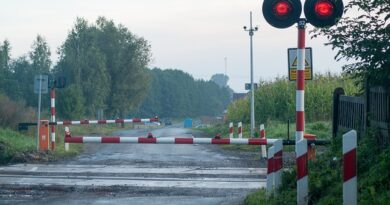Artemis 1
Context:
Recently, the Artemis I Moon rocket – NASA’s Space Launch System (SLS) with the Orion spacecraft atop it has been rolled out for its testing debut at Kennedy Space Center in Florida for the first time.
About Artemis 1 Mission:
- Artemis program, which aims to establish a long-term, sustainable human presence on the moon by the end of the 2020s.
- Artemis 1 will jump-start that vision, sending an uncrewed Orion on a roughly monthlong journey around the moon.
- Launch is expected in May or June.
- Artemis I, formerly Exploration Mission-1, will be the first integrated test of NASA’s deep space exploration systems: the Orion spacecraft, Space Launch System (SLS) rocket and the ground systems at Kennedy Space Center in Cape Canaveral, Florida.
- The first in a series of increasingly complex missions, Artemis I will be an uncrewed flight test that will provide a foundation for human deep space exploration, and demonstrate our commitment and capability to extend human existence to the Moon and beyond.
- During this flight, the spacecraft will launch on the most powerful rocket in the world and fly farther than any spacecraft built for humans has ever flown.
- It will travel 280,000 miles from Earth, thousands of miles beyond the Moon over the course of about a four to six-week mission.
- Orion will stay in space longer than any ship for astronauts has done without docking to a space station and return home faster and hotter than ever before.
Objectives:
- Find and use water and other critical resources needed for long-term exploration.
- Investigate the Moon’s mysteries and learn more about our home planet and the universe.
- Learn how to live and operate on the surface of another celestial body where astronauts are just three days from home.
- Prove the technologies we need before sending astronauts on missions to Mars, which can take up to three years roundtrip.
NASA and the Moon
- The US began trying to put people in space as early as 1961. Eight years later, on 20th July, 1969, Neil Armstrong along with Edwin “Buzz” Aldrin became the first human to step on the Moon as part of the Apollo 11 mission.
- Apart from the purpose of space exploration, NASA’s endeavour to send Americans to the Moon again is to demonstrate American leadership in space and to establish a strategic presence on the Moon, while expanding the US global economic impact.
Moon Exploration
- In 1959, the Soviet Union’s uncrewed Luna 1 and 2 became the first rover to visit the Moon.
- Before the USA sent the Apollo 11 mission to the Moon, it sent three classes of robotic missions between 1961 and 1968.
- After July 1969, 12 American astronauts walked on the surface of the Moon until 1972.
- In the 1990s, the USA resumed lunar exploration with robotic missions Clementine and Lunar Prospector.
- In 2009, it began a new series of robotic lunar missions with the launch of the Lunar Reconnaissance Orbiter (LRO) and the Lunar Crater Observation and Sensing Satellite (LCROSS).
- In 2011, NASA began the ARTEMIS.
- In 2012, the Gravity Recovery and Interior Laboratory (GRAIL) spacecraft studied the Moon’s gravity.
- Apart from the USA, the European Space Agency, Japan, China, and India have sent missions to explore the Moon. China landed two rovers on the surface, which includes the first-ever landing on the Moon’s far side in 2019.
ISRO’s Moon Exploration:
- Chandrayaan 1:
- The Chandrayaan project began in 2007 with an agreement between India’s space agency ISRO and Russia’s ROSCOSMOS for mutual cooperation.
- However, the mission was postponed in January 2013 and rescheduled to 2016 as Russia was unable to develop the lander on time.
- Findings: Confirmed presence of lunar water.
- Evidence of lunar caves formed by an ancient lunar lava flow.
- Past tectonic activity was found on the lunar surface.
- The faults and fractures discovered could be features of past interior tectonic activity coupled with meteorite impacts.
- Chandrayaan-2 is India’s second mission to the moon and comprises a fully indigenous Orbiter, Lander (Vikram) and Rover (Pragyan).
- The Rover Pragyan is housed inside Vikram lander.
- The Indian Space Research Organisation (ISRO) recently announced India’s third lunar mission Chandrayaan-3, which will comprise a lander and a rover.
Source: NASA
You can find many articles on SPACE and SCIENCE AND TECHNOLOGY (part of GS III) in our website. Go through these articles share with your friends and post your views in comment section.




